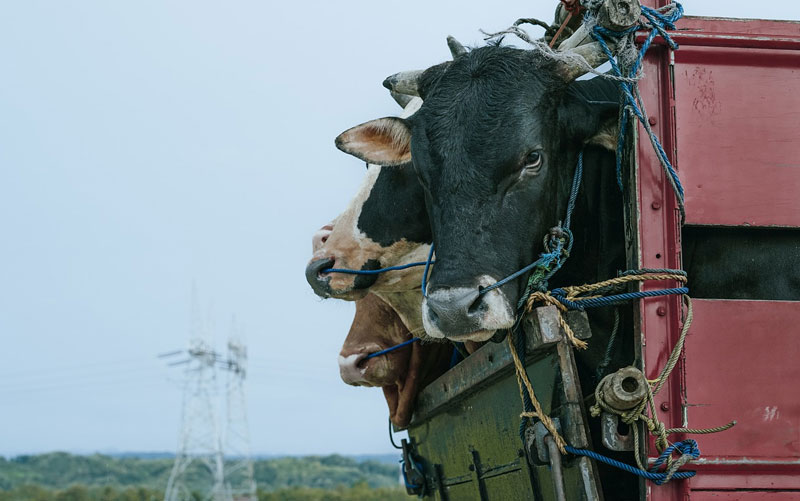SUMMARY
EFSA Scientific Opinion on the Welfare of Cattle during Transport
800w-cattle-in-truck
EFSA has provided a scientific opinion on the welfare of cattle during transport, to assist with the EU Commission’s evaluation of animal welfare legislation, as part of the Commission’s Farm to Fork Strategy.
Based on severity, duration and frequency of occurrence, eleven negative welfare consequences, linked to cattle experiencing pain, discomfort, distress, fear, frustration and fatigue, were found to be particularly relevant to the transport of cattle:
- Group stress
- Handling stress
- Heat stress
- Injuries
- Motion stress
- Prolonged hunger
- Prolonged thirst
- Respiratory disorders
- Restriction of movement
- Resting problems
- Sensory overstimulation
These welfare consequences were found to be mainly associated with:
- Inexperienced/untrained handlers
- Inappropriate handling
- Structural deficiencies of vehicles and facilities
- Poor driving conditions
- Insufficient space and unfavourable microclimatic (heat) conditions in the transport vehicles
- Poor husbandry practices
Key implications and recommendations in the Opinion include the following:
- Current rules and practices need to be revised to include requirements for more space, lower temperatures, and reduced journey times.
- The term fitness for transport requires a proper definition.
- The temperature inside vehicles transporting cattle should not exceed the Upper Critical Temperature (UCT), which is estimated to be 25°C.
- Future research should be conducted in relation to the development of systems to maintain the microclimatic conditions in stationary as well as moving vehicles across different compartments and deck heights by e.g., air conditioning.
- Adequate space should be provided for animals during transport to permit them to adjust posture and balance. Minimum space allowance should be calculated using a validated scientific method.
- Maximum journey time should take into account the stress (and sometimes fear) that the animals will experience continuously or semi-continuously.
- Even when a transport vehicle is fitted with water drinkers, animals will get thirsty after 9 hours, which can lead to dehydration and associated problems. They will go on to experience hunger after 12 hours of travel. These issues need to be taken into account when deciding on the maximum permitted journey time.
- Giving cattle a rest break on a stationary vehicle at the current commercial space allowance does not lead to the desired drinking, eating, and resting behaviour. Therefore, they need to be unloaded from the transport vehicle to suitable premises.
The Opinion also deals with specific animal transport scenarios identified by the European Commission relating to transport of unweaned calves, cull cows, the export of cattle by livestock vessels, the export of cattle by road, roll-on-roll-off ferries and ‘special health status animals’, and sets out welfare concerns related to these issues.
Source: EFSA Journal 2022;20(9):7442





